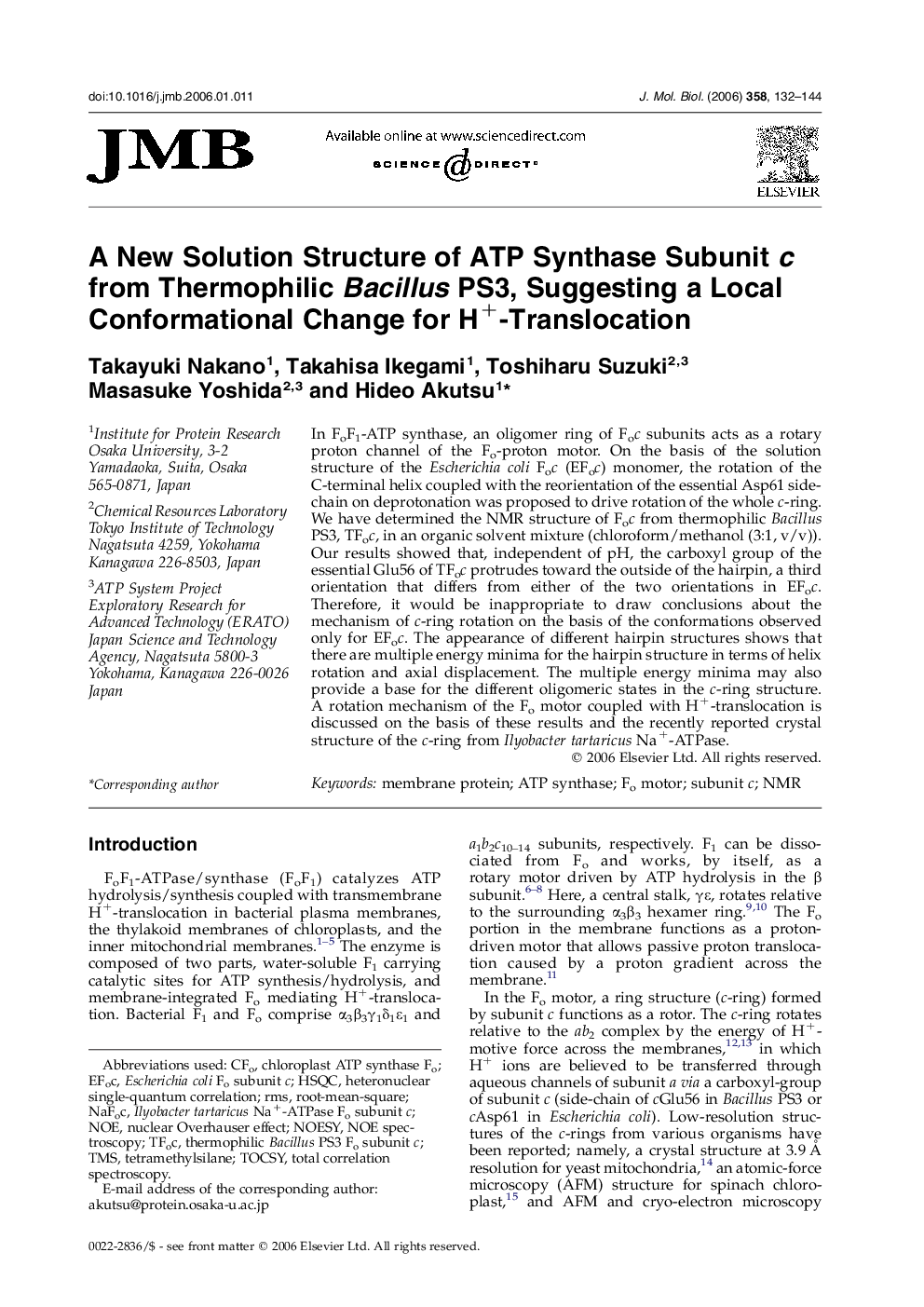| Article ID | Journal | Published Year | Pages | File Type |
|---|---|---|---|---|
| 2189794 | Journal of Molecular Biology | 2006 | 13 Pages |
In FoF1-ATP synthase, an oligomer ring of Foc subunits acts as a rotary proton channel of the Fo-proton motor. On the basis of the solution structure of the Escherichia coli Foc (EFoc) monomer, the rotation of the C-terminal helix coupled with the reorientation of the essential Asp61 side-chain on deprotonation was proposed to drive rotation of the whole c-ring. We have determined the NMR structure of Foc from thermophilic Bacillus PS3, TFoc, in an organic solvent mixture (chloroform/methanol (3:1, v/v)). Our results showed that, independent of pH, the carboxyl group of the essential Glu56 of TFoc protrudes toward the outside of the hairpin, a third orientation that differs from either of the two orientations in EFoc. Therefore, it would be inappropriate to draw conclusions about the mechanism of c-ring rotation on the basis of the conformations observed only for EFoc. The appearance of different hairpin structures shows that there are multiple energy minima for the hairpin structure in terms of helix rotation and axial displacement. The multiple energy minima may also provide a base for the different oligomeric states in the c-ring structure. A rotation mechanism of the Fo motor coupled with H+-translocation is discussed on the basis of these results and the recently reported crystal structure of the c-ring from Ilyobacter tartaricus Na+-ATPase.
